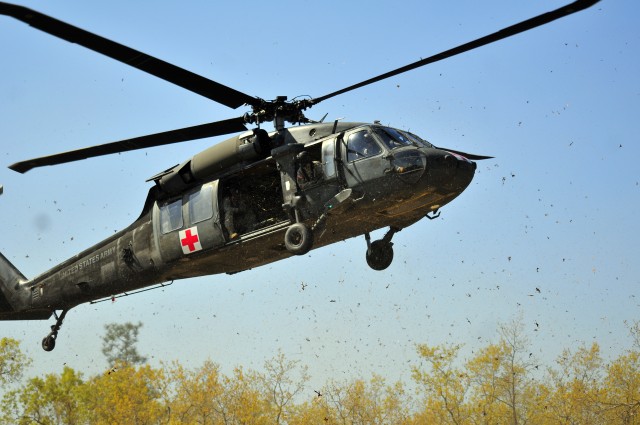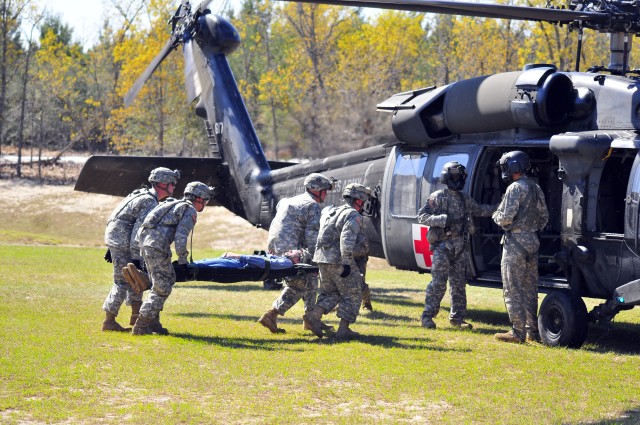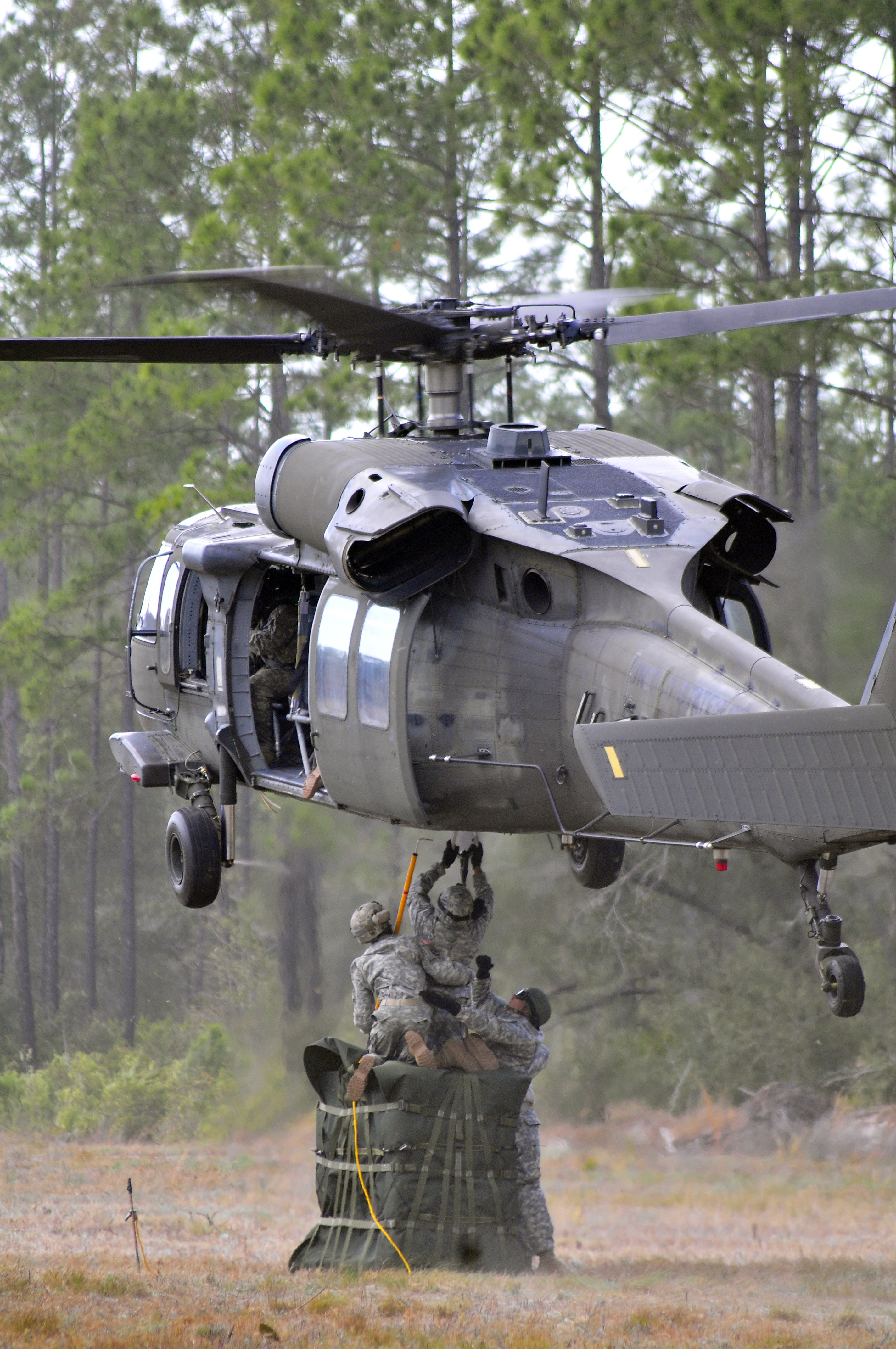FORT STEWART, Ga. Soldiers of 1st Heavy Brigade Combat Team, 3rd Infantry Division, recently practiced an Emergency Deployment Readiness Exercise to Camp Blanding, Fla., March 7-14.
The EDRE was not only a test of the brigade's ability to deploy rapidly, but also a chance for Soldiers to practice various skills they might need in a Chemical, Biological, Radiological, Nuclear or High-Yield Explosive Consequence Management Response Force mission.
"We're learning some good lessons that are better to learn now, in play, than when American lives are at stake," said Lt. Col. Greg Sierra, 2nd Battalion, 7th Infantry Regiment commander. "We've designed a series of training events throughout Camp Blanding that exercise the technical and tactical tasks that our companies could be expected to do in this kind of environment."
The training included sling load operations, urban search and rescue, rubble clearing, and a scenario mission where Soldiers had to help law enforcement with a chaotic town.
"We're conducting sling load training with two different load types and two different helicopters, a Chinook and a Blackhawk," said Capt. Jeffrey Halladay, A Company, 2/7 commander.
Sling load training involves a group of Soldiers attaching or detaching a netted load of equipment from a helicopter. Along with sling load training, Soldiers of 1st HBCT also practiced Urban Search and Rescue tactics and rubble clearing.
"Today we're doing search and rescue training as part of the EDRE," said Sgt. Walter Soldani, 2/7 Inf. "The Soldiers really like it out here. Before this training, I think we really didn't have all the knowledge we needed when it comes to jackhammers and moving large objects with just pry bars. We didn't really know what to expect when we came out here, but it was great training."
The Soldiers didn't just familiarize themselves with jackhammers and pry bars but also with knots used in rescue missions, search tactics in a mock-building and rescuing someone from a well.
"We are familiarizing the CCMRF personnel, which include these 1st HBCT Soldiers out here, with the tools we use to get the job done," said Master Sgt. Alden Morrow Jr., Florida Search and Extraction noncommissioned officer in charge. "If the fire department uses up their resources, we augment them within a 72-hour window. The CCMRF personnel's role is to follow behind if the need arises. So today, we are helping them realize what they might see when they roll up to a scene, and teach them what we do so they can help us."
The training was a success, according to Morrow.
"The training is going very well, better than expected," he said. "The Soldiers seem to be eager to learn and are very receptive. There's no best part to this training, but I think the Soldiers like to get on the jackhammer and realize that they can take a few pry bars and move a few thousand pounds."
The culmination of the training was at the Military Operations in Urban Terrain site, which was converted into a scene of utter chaos for the exercise. Soldiers were met with a scenario that included radiation poisoning, a chlorine pipe bursting and injured civilians.
"Today we were testing our abilities for any kind of scenario we might run into for a CCMRF type environment," said Capt. Matt Marfongelli, D Company, 2/7 Inf. commander. "Our primary mission was wellness checks, but we also provided medical care to the civilians that were ill. (The mock civilians and police officers) threw a lot at us at the very beginning. It was a three-hour mission, but everything was thrown at us in the first hour and fifteen minutes, so I'm proud of the Soldiers that kept their calm."
Sierra was also pleased with the results of the training.
"Today, the company learned a lot, which is really what it was all designed to do," he said. "They were somewhat tentative when they initially came in, but they steadily gained confidence and trust in the American civilians they were interacting with as the scenario progressed."
As proud as he was for the results of the training, he was prouder in the Soldiers and Families that support them.
"The Soldiers and Families are doing a great job with this," he said. "It's a tough mission, and for the Families at home it's very difficult to not know when the Soldier may get deployed with a no notice mission rather than a known deployment. Our Families are doing a great job supporting this mission and allowing our Soldiers to save American citizens if the need arises."






Social Sharing